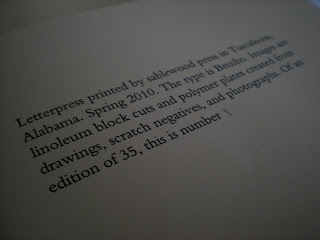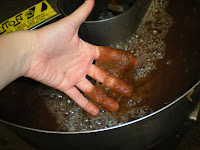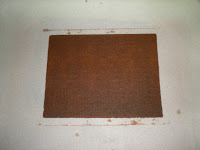
ne thing about getting two masters degrees in three years, you have no life. For me, this includes summer break. I mentioned previously about
my awesome time at the University of Utah's Book Arts department in May. Sadly, this remains the extend of any exciting summer activities. Instead of hitting up the beach or travailing about Europe like other people I know, I chose to stay in this sweaty little burg and take some much needed Library classes. Thats right, ladies and gentleman, I
voluntarily stayed in 105 degree heat and humidity to learn about the Dewey Decimal *
ahem* Classification (not system, get it right...), HTML coding, and just how much money academic libraries spend on databases. Some of my classes were wonderful, some were not so much.
Now, I'm consumed with thoughts of the impending semester which start in a mere week. Not much of a break. The good thing about this experiment they call graduate school is that because I am doing two programs, each semester is a chance to mix it up, do something different, and prevent the fatigue of doing the same thing all the time. Now my mind races with prices of sharpening stones, goat skins, making my own paper, the complexities of really good typographic design, and how the hell I am going to exert any kind of authority to the newbies when I still feel like the newbie. This semester is going to be a doozie for me. I've got a full plate of classes, plus an assistantship, all while still working at the special collections library. Here is what I'm going to be taking:
Printing III - Students initiate and produce an edition of a relatively extensive book and/or participate in production of a Parallel Editions volume. Emphasis is on production, with manuscript selection and editing being critical aspects. Photopolymer platemaking processes are introduced in a desktop publishing environment adapted to historic tools and mediums. Such subjects as marketing and distribution of limited edition books are covered.
Binding III - A concentrated study of the use of leather as a binding cover material. Various binding styles and structures appropriate to leather treatment are studied. Familiarity with the preparation and application of leather in bookbinding is achieved through a series of assigned projects culminating in a final project. Though not the primary focus of the course, binding design and innovation will be studied and explored.
Tool Sharpening - For all my new fancy leather paring tools, and perhaps, my kitchen knives.
Book Repair - I don't even know where this class is going to go, but it will be a great way to learn to repair books and will let me know how I would like conservation type stuff.
Directed Research - 100 hours of papermaking. I will be making all the paper for my projects this year using old t-shirts and bed sheets.
Practicum in Teaching in the Book Arts - I will be assisting my printing professor with the first year printing class. I'll be there to help the students and do demonstrations.
Graduate Assistantship - With the help of another second year student, I will be assisting the Book Arts Department with any and every thing that they need. I'll be maintaining the work spaces, organizing and managing the exhibition space on the fifth floor, as well as planning for local events we are involved in.
In October there is a conference for people who wish to teach letterpress in Washington DC that I am going to look into going to as well.
A lot, right? Its going to be a lot of work. I will be tired and often. I will be cranky at some points, but I also will have a blast for most of it. I'm already looking forward to Christmas break back in the snowy mountains where it will be cold and I can sleep in!
*The amazing display cap above is by Jessica Hische, an amazing designer I came across in my perpetual search for awesome design and typography. The letter comes from her Daily Drop Cap project.



 ecently, a dear friend of mine,
ecently, a dear friend of mine, 





 here are three binding activities which make the part of my thumb under the nail so sore, yet I can't stop pushing on it:
here are three binding activities which make the part of my thumb under the nail so sore, yet I can't stop pushing on it:
 unny thing about Graduate School is that you never have any time for anything but school, work, and a little sleep. I've been told this is not everyone's experience with grad school. My dad brags about how he had more time in grad school than any time in his life. I do not, hence my ghastly maintenance of this blog. It should be of comfort to all that my absence is merely a result of throwing myself head first into my program and not just being lazy.
unny thing about Graduate School is that you never have any time for anything but school, work, and a little sleep. I've been told this is not everyone's experience with grad school. My dad brags about how he had more time in grad school than any time in his life. I do not, hence my ghastly maintenance of this blog. It should be of comfort to all that my absence is merely a result of throwing myself head first into my program and not just being lazy. 

 arlier this week a
arlier this week a 

 ne thing about getting two masters degrees in three years, you have no life. For me, this includes summer break. I mentioned previously about
ne thing about getting two masters degrees in three years, you have no life. For me, this includes summer break. I mentioned previously about 








































